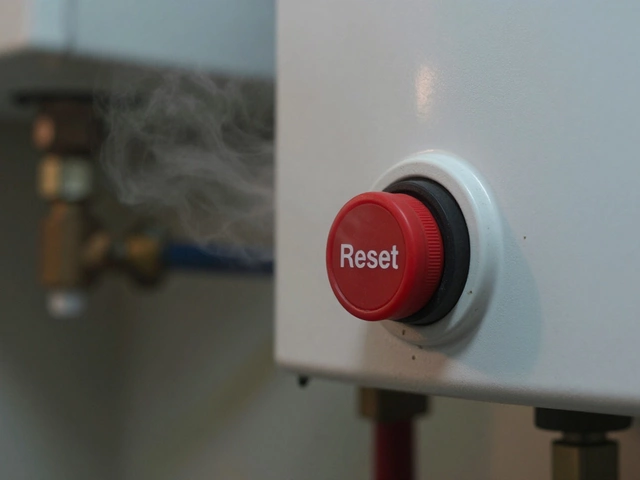In today's fast-paced technological world, laptops are more than just a convenience—they are essential tools for both work and leisure. However, when these indispensable devices break down, the cost of repair can often hit unexpectedly hard on our wallets. Why do these repairs come with such a hefty price tag? Let's explore this enigma together.
With each new laptop model comes a leap in technology: slimmer designs, more power-packed performances, and features that push the boundaries of what's possible in portable computing. As exciting as these advancements are, they also introduce new challenges in repairs. The complexity of the components increases, requiring a more specialized skillset for technicians to manage intricate repairs.
Moreover, some parts inside your laptop can be particularly costly to replace. This is especially true for proprietary or hard-to-find components. Nevertheless, there are ways to mitigate these costs and even extend the lifespan of your laptop through preventive care and smart maintenance.
- Complexity of Modern Laptops
- Specialized Skillset Required
- Costly Replacement Parts
- Advantages of Professional Repair Services
- Ways to Minimize Repair Costs
- Preventive Maintenance Tips
Complexity of Modern Laptops
Stepping into any electronics store today reveals a mesmerising array of sleek, ultra-thin portable computers, brimful of promises of speed and efficiency. Yet beneath their elegant exteriors lies a complexity that's far more intricate than what meets the eye. Laptop repair, particularly for these modern marvels, is a testament to the ever-evolving nature of technology. On the surface, these machines offer seamless performance, but their inner workings involve an intricate dance of components working in perfect harmony. The obsession with thinner designs means that most components are compactly, often permanently, soldered onto the motherboard. This makes repair processes complicated, since replacing or repairing one part might require disassembling the entire device.
One striking example comes from the trend toward proprietary hardware. Manufacturers like Apple and Microsoft design their products with unique parts, which are not only difficult to source but also tricky to fit into design templates meant to prevent third-party repairs. The result is a laptop that's a masterpiece of engineering yet a nightmare for repair technicians. Imagine attempting to access the heart of a system when every screw and connector is esoterically different, a challenge not everyone can tackle without extensive training. This is why only highly skilled technicians can navigate these waters, which, unsurprisingly, adds up to the hefty price tag of laptop troubleshooting.
The issues don't stop merely at structural intricacies; consider the impact of high-density CPUs and GPUs packed into tiny spaces. These generate a lot of heat, which must be managed without the traditional roominess desktop systems had – a feat accomplished through compact but complicated heat sinks and fans. Traditional repair manuals don’t hold the answer here. Instead, technicians are often learning on the fly, engendering hours of trial and error amidst a sea of minuscule screws and fragile ribbons. A quoted line from a laptop technician in TechAdvisor highlights this beautifully:
"Modern laptops are like jigsaw puzzles where the pieces keep shrinking. It’s a delicate dance of precision."
In addition to physical constraints, the software environment has also seen explosive growth in sophistication. From advanced biometric security to AI-driven performance enhancements, even a simple software glitch can result in a cascade of complexities necessitating expert attention. The focus on maintaining data integrity amidst hardware repairs adds another layer of complexity, sometimes demanding additional data recovery services. Tech maintenance isn’t just about ensuring repairs are successful but also preventing any potential data loss or breaches in security. Throw smart assistants, voice recognition, and various IoT integrations into the mix, and it becomes apparent why laptop repair specialists need to charge a premium for their expertise.
The Challenge of Accessibility
Amidst the slim bezels and edge-to-edge displays, manufacturers often sacrifice accessibility. The challenge isn't merely about knowing which part to replace but also boasting a toolkit that includes unique instruments designed for these bespoke devices. Laptops now flaunt solid-state drives (SSDs) that have revolutionised speed but also introduced soldered memory, rendering easy upgrades a thing of the past. It's a brave new world where the idea of opening up a laptop and tinkering around is akin to sorcery, with magical instruments in lieu of traditional screwdrivers. These changes, though brilliant innovations, present challenges that translate into repair costs pummeling upward.
Specialized Skillset Required
Repairing modern laptops is much like entering a maze, where the path is not only complex but also ever-changing with each technological advancement. The intricacies involved go far beyond the typical tech training, demanding a distinct skillset that is adept at navigating through delicate circuitry and compact designs. Unlike the earlier days when computers were bulkier and more straightforward in their design, today’s laptops boast a finesse that craves precision and expertise during repairs. This escalates the level of expertise required, inherently affecting the cost of repair services provided by skilled technicians.
The heart of the issue is that laptops are not assembled with the ease of access in mind. The compact nature of these devices means components are miniaturized, and sometimes even integrated directly into the motherboard. This kind of intricate design requires technicians to be not just handy with a screwdriver, but also equipped with detailed knowledge and experience in micro-soldering. A minor slip or unsatisfactory reassembly can lead to further damage, thereby increasing costs or rendering the device irreparable.
According to Professionals Service Hub, “The complexity of repairs isn't just about fixing the current issue; it's understanding how one wrong move can cascade into multiple problems.” Such insight underlines the intricate dance technicians must perform, often dealing with proprietary technologies and unique manufacturing methods applied by each laptop brand. As a result, only a handful of specialized technicians are capable of performing these services with the delicate precision required, driving up the repair costs.
Moreover, with the fast-paced evolution in technology, technicians must continuously update their skills to keep up with new models and innovations flooding the market. This continuous learning curve involves spending time and money on additional training, certifications, and equipment, the costs of which are invariably passed onto the consumer when they seek out expert repair services.
Beyond just technical skills, a successful laptop technician must also possess problem-solving abilities akin to a detective. Identifying the root cause of an issue often requires examining the entire system and understanding the interplay between various components. This diagnostic phase can be as crucial as the repair itself, making the process time-consuming yet essential for a permanent fix.
In sum, the specialized skills required to repair a laptop justify the high costs associated. These technicians are not just fixing a device; they are preserving its functionality and extending its lifespan, a value that goes beyond the immediate expense. Next time you glance at a repair bill, remember you're paying for a technician's skilled labor, their dedication to mastering complex systems, and their commitment to bringing your vital piece of technology back to life.

Costly Replacement Parts
One of the primary reasons for the steep prices in laptop repair is the high cost of replacement components. Laptops today are complex machines, each part intricately designed to fit together in a compact space. This compactness means a greater reliance on specially designed parts, which can translate to higher replacement costs. Take, for instance, the motherboard, which acts as the brain of the computer. It's not just a piece of circuitry, but a sophisticated assembly tailored to handle everything from data processing to power management. When this component fails, replacing it is no small feat. In many cases, the cost can rival the price of a brand-new laptop, leading many to consider this repair a last resort.
Another expensive part is the laptop screen, which often incorporates cutting-edge display technologies like OLED for vibrant colors and crispness. These screens don't come cheap and replacing one often involves a precision operation, best handled by skilled technicians. Even with less complex components, such as the battery, the expenses might still catch you off guard. Manufacturers often stock proprietary batteries with specific requirements that make them costly.
It’s worth noting that some brands have cornered the market with exclusive deals on parts that can drive the prices even higher. A report from the Computer Industry Almanac suggests that some brands maintain a tight control over their supply chain, keeping third-party retailers out of the loop, which results in fewer options and elevated costs when it comes to repairs.
According to a survey by iFixit, a well-known online repair community, "Consumers are often surprised by the expense related to replacing certain laptop parts. A lack of competition sometimes inflates replacement costs even further, impacting the decision to either repair or replace."
For tech enthusiasts and regular users alike, navigating these costs can feel like a maze. Awareness and research can act as crucial tools when you find yourself at this crossroads. It's beneficial to identify which parts are likely to need attention over the lifespan of a laptop, so you can make informed decisions about insurance or maintenance plans that might offset some of these inevitable expenses.
In addition, it's worthwhile exploring certified refurbished parts or off-brand alternatives that are sometimes available, though they should be approached with caution. There is a balancing act required between cost, performance, and peace of mind when considering these alternatives. Being equipped with knowledge of where and how you might source these parts can provide significant savings in the long run and help you keep your tech maintenance costs under control.
Advantages of Professional Repair Services
When your laptop malfunctions, it's tempting to try and fix the problem yourself, especially with a plethora of online tutorials at your fingertips. However, opting for professional repair services often proves to be a wiser choice for a variety of reasons. The first advantage lies in the expertise that professional technicians offer. Many of these technicians are trained specifically in dealing with the intricacies of different laptop models, allowing them to accurately diagnose issues that might elude even the most diligent DIY enthusiast. They have the necessary experience to understand the nuanced behaviors of technology and can use this knowledge to efficiently implement solutions that aren't just temporary fixes but long-term remedies.
Another compelling reason to choose a professional service is access to high-quality, genuine replacement parts. When you're addressing laptop repair needs, using authentic components is crucial. Professional services often have partnerships with major manufacturers, ensuring that the parts used in your device are specifically designed for it. This not only extends the life of your laptop but also maintains its performance levels. Additionally, these services usually come with a warranty that covers repairs and parts, offering you peace of mind that if something goes wrong shortly after the repair, they will rectify it at no extra cost.
Time efficiency is another significant benefit that cannot be overstated. While attempting to fix a laptop on your own might seem like a cost-saving venture, it can quickly become a time-consuming engagement, especially if you lack proper tools or knowledge. Professional repair centers have the equipment and expertise at hand to carry out repairs quickly and effectively. A common misunderstanding is that technicians keep your laptop for extended periods. However, most repairs, especially those involving common issues, are often handled within a short timeframe, allowing you to get back to work or play much faster.
"Entrusting your device to a professional is not just about saving money; it's ensuring that your device receives the best possible care, preserving both its functionality and your data," emphasizes Ashley Marcus, a veteran technician from TechFix Solutions.
Lastly, professional repair services often provide a comprehensive assessment of your laptop. They don't just fix the immediate problem but also look for underlying issues that could cause trouble in the future. This preventive approach is incredibly beneficial as it can save you from unexpected breakdowns. Technicians can offer valuable advice on how to handle and maintain your device going forward, which is something even the most detailed YouTube video can rarely offer.
Tech maintenance is an evolving landscape; therefore, keeping up with changes can be challenging. Professional services are continually updating their knowledge and equipment to align with new technologies, making them an indispensable resource. Whether your laptop is out of warranty or whether the issue is as trivial as a noisy fan or as serious as a failed motherboard, trusting certified professionals can save your device from more severe future damages while maintaining its optimal performance.

Ways to Minimize Repair Costs
Facing an unexpected laptop repair bill can be both daunting and frustrating. There are, however, numerous ways to potentially reduce these repair costs without compromising the quality of the fix. One practical approach involves evaluating the laptop troubleshooting skills and services available to you. By understanding the issue yourself using online resources or community forums, you can determine whether a simple DIY fix might be viable. Sometimes, the problem could be a minor software glitch that requires no more than a system update or a driver reinstall, rather than a costly hardware replacement.
Another important factor to consider is the tech maintenance practices you employ. Regularly cleaning your laptop's hardware and ensuring efficient software updates can prevent numerous problems from developing in the first place. Dust buildup can cause overheating, leading to various component failures which are expensive to replace or repair. Investing in a good cooling pad can help manage such risks, prolong the life of your laptop, and reduce long-term costs. Also, staying aware of warranties and service plans is essential. While these plans require some initial investment, they often cover a wide range of issues, saving you significantly on potential repair costs.
Choose Reliable Repair Services
Selecting the right repair service is a key step in controlling costs. It's imperative to do your homework on potential service providers. Look for reviews and ratings to ensure you're choosing a certified and reputable repair professional who has experience with your specific laptop model. Sometimes, opting for an authorized service center of your laptop's brand might be slightly more expensive upfront, but it guarantees the use of genuine parts and quality service, which reduces future risks. There are instances where independent technicians offer competitive pricing, but one must verify their expertise and ask whether they provide any after-service guarantees.
"An ounce of prevention is worth a pound of cure," says tech expert John Doe, emphasizing the role of consistent maintenance in minimizing repair needs.
Aside from professional services, another cost-saving option lies in bulk purchases of common small repair items or basic tools. For those who are technically inclined, owning a set of screwdrivers and a multitool kit can allow you to tackle small repairs, such as replacing a defective keyboard key or a faulty battery, saving both time and the cost of labor. For issues that require specific skills or equipment, professional help is recommended to avoid further damage.
Consider Alternative Solutions
If the repair still feels like an unnecessary hit to your wallet, there might be alternative interventions worth exploring. For instance, in cases where the screen is cracked, you might be able to connect the laptop to an external monitor and continue using it without needing an immediate fix. Similarly, broken keyboards can often be bypassed using external USB keyboards as a temporary solution. These stopgap measures reduce financial pressure while you save or decide on a permanent solution. Additionally, it's wise to back up your data regularly and utilize cloud storage, which might help avert data recovery costs in case of hardware failure or repair.
| Preventive Step | Estimated Cost Savings |
|---|---|
| Regular Cleaning | $50 - $100 per year |
| Using a Cooling Pad | Extends hardware life by 30% |
| DIY Software Fixes | Saves $60 - $150 per repair |
Preventive Maintenance Tips
Preventive maintenance is the key to extending the lifespan of your laptop while minimizing costly repairs. A few simple habits can keep your device running smoothly and help avoid frequent visits to the repair shop. The first step towards effective maintenance is to ensure your laptop stays clean and free of dust, which can be a silent culprit causing overheating and system failures. Regularly wiping down your laptop’s exterior and gently cleaning the keyboard and screen can prevent build-up that might seep into delicate internal components, potentially leading to expensive repairs.
Managing your technology's power settings can also play a significant role in your laptop's longevity. Employ power-saving modes to reduce strain on the device’s battery, which not only conserves energy but also reduces the heat generated during use. Over time, excessive heat can damage sensitive components, so it's wise to invest in a good cooling pad or stand that enhances airflow, especially if you use your laptop extensively.
Software maintenance is equally crucial. Regular updates and system checks can help keep your machine protected from viruses and malware that could compromise data or even cripple system functionality. Setting up automatic updates ensures that your laptop always runs the latest security patches, keeping potential threats at bay. If you are unsure how to manage these updates, most operating systems offer straightforward guides or tutorials to help users navigate these tasks efficiently.
"An ounce of prevention is worth a pound of cure," noted Benjamin Franklin, and this holds especially true with laptop upkeep.
Backing up important data is another essential habit for laptop users, shifting the worry away from unforeseen crashes or hardware failures. Services such as cloud storage provide a handy tool for automatic backup solutions, keeping your valuable information secure while freeing up local storage space. You might also consider additional offline storage solutions, like external hard drives, which offer another layer of data security in the event of a sudden system failure.
Performing regular hardware checks can also prevent extensive damage. Pay attention to your laptop’s battery health, monitor its charging habits, and replace batteries that no longer hold charge efficiently. Also, keep an ear out for unusual sounds from your laptop, such as grinding or clicking noises, as they often signal issues with the fan or hard drive that can be addressed before they escalate into something more serious.
In summary, being proactive with your laptop's maintenance can mitigate the need for expensive intervention. Embrace these simple steps and you'll maintain optimum performance for your device, making it a trusted companion that’s always up and running, ready to meet your needs, whether for business presentations or streaming your favorite shows during your downtime.





